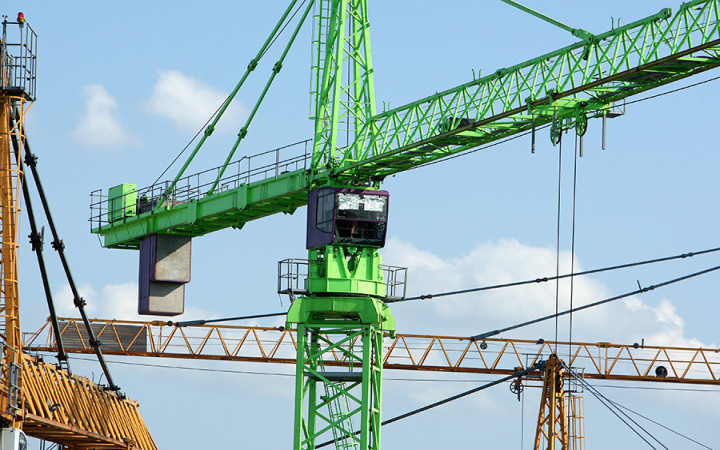Today’s Wonder of the Day was inspired by Isaac from Fenton, MI. Isaac Wonders, “How do cranes work?” Thanks for WONDERing with us, Isaac!
Think of the tallest building you’ve ever seen. Was it the Empire State Building? The Washington Monument? Maybe it was the Shanghai Tower. Have you ever WONDERed how people build such tall structures? Think about how high up they have to move heavy beams and huge panes of glass. How do they get all those building materials so far up?
If you’ve ever seen a building being built, you know it’s done with a crane. These tall machines are used to lift all those heavy building parts high into the air. In many large cities, cranes are as much a part of the skyline as tall buildings themselves. But how do they work?
Cranes can be found at construction sites around the world. Visit a site where they’re building a tall tower, and you’d be most likely to find a tower crane.
Tower cranes stay in one place and lift large loads to great heights. Without them, it would be very difficult to lift heavy construction materials and equipment. Concrete and steel beams are much too heavy for construction workers to carry up stairs. Instead, they load these objects onto a crane and carefully put them in place.
The tall part of the crane that sticks up in the air is called the mast. It looks kind of like the mast on a ship! But instead of a flag or sail, this mast raises building materials. To do so, it must be supported by a large, heavy base. For example, the mast of a tower crane is usually bolted to a large concrete pad that can weigh as much as 400,000 pounds!
At the top of the mast, you’ll find a gear and motor that allow the crane to rotate. You’ll also find the working arm, machinery arm, and operator cab.
The working arm is called the jib. It’s long and horizontal. The jib uses a trolley to help carry the load. The machinery arm is shorter than the jib. It contains the crane’s motors, along with large concrete counterweights that help balance the load. Finally, the operator cab contains the electronic controls used to operate the crane.
Cranes combine simple machines to lift extremely heavy objects. In balance-style cranes, the crane’s beam is balanced at a point, called the fulcrum. This allows it to lift heavy objects with a relatively small force. In this way, the crane’s beam acts as a simple lever. Cranes also make use of the pulley, another simple machine. Tower cranes often have more than one pulley. This helps it multiply its force to lift heavy objects.
Using the scientific principles behind simple machines, such as the lever and the pulley, cranes can multiply smaller forces to lift heavy loads to great heights. How heavy? It’s not uncommon for large cranes to lift loads of nearly 40,000 pounds!
Standards: NGSS.PS2.A, NGSS.PS23.C, CCRA.L.3, CCRA.L.6, CCRA.R.1, CCRA.R.2, CCRA.R.10, CCRA.W.2, CCRA.W.9, CCRA.L.1, CCRA.L.2, CCRA.SL.1, CCRA.SL.2




